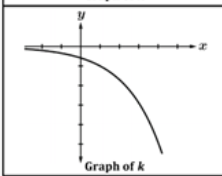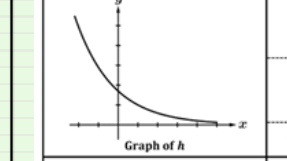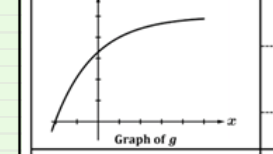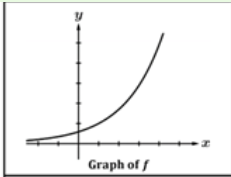AP precalculus 1.1-1.6
1/26
There's no tags or description
Looks like no tags are added yet.
Name | Mastery | Learn | Test | Matching | Spaced |
|---|
No study sessions yet.
27 Terms
What is a function
a relation that assigns exactly one output for every input from its domain. It is often represented as f(x), where x is the input variable.
What is the domain
the set of input values of a function and is represented by the independent variable
What is the range
the set of output values of a function that is represented by the dependent variable
What are the zeros of a function
the input values (x-values) for which the output (f(x)) equals zero. They represent the points where the graph of the function intersects the x-axis.
rate of change formula
Y1-Y2/X1-X2

Describe the graph of k
Graph of k is decreasing and the AROC is negative. The graph of k is concave down and the average rate of change is decreasing. The graph of k is decreasing at t decreasing rate

Describe the graph of h
Graph of h is decreasing and the AROC is negative. Graph of h is concave up and the AROC is increasing. The graph of h is decreasing at an increasing

Describe the graph of g
Graph of g is increasing and the AROC is positive. graph of g is concave down and the AROC is decreasing. the graph g is decreasing at a decreasing rate

describe graph of f
Graph of f is increasing and the AROC is positive. the Graph of f is concave up and the AROC is increasing. Graph of f is increasing at an increasing rate.
How do you know if a function is linear
because the AROC is constant
How do you know if a function is Quadratic
because the AROC of the AROC is constant
What are the rules of a polynomial
a_{n}x^{n}+a_{n-1}x^{n-1}\ldots
Where
n is a positive integer
a is a real number and an is not equal to zero
the polynomial’s degree is n
the polynomial leading coefficient is an
What is the multiplicity
how many times a zero occurs
if a degree is even what is the end behavior like
they go the same way
if a degree is odd what is the end behavior like?
they go different ways
how do you know if a polynomial has absolute max or min
if the degree is even it does. If odd it does not
if the degree is even and the leading coefficient is positive what does it mean
there is an absolute min
if the degree is even and the leading coefficient is negative what does it mean
there is an absolute max
what is a relative or local maximum
the highest point on the graph in a small region
what is relative or local min
the lowest point on the graph in a small region
what is the absolute or global max
the highest point of the graph
what is the absolute or global min
the lowest point of the graph
how can you tell how many zeros a polynomial has
by looking at the degree
if the multiplicity is even what does that mean
it ‘bounces’ off the x axis
if the multiplicity of a polynomial is odd what does that mean
it ‘cuts’ through the x axis
how to prove a polynomial is even analytically
ensure that f(-x)=f(x)
how to prove a polynomial is odd analytically
ensure that f(-x)=-f(x)